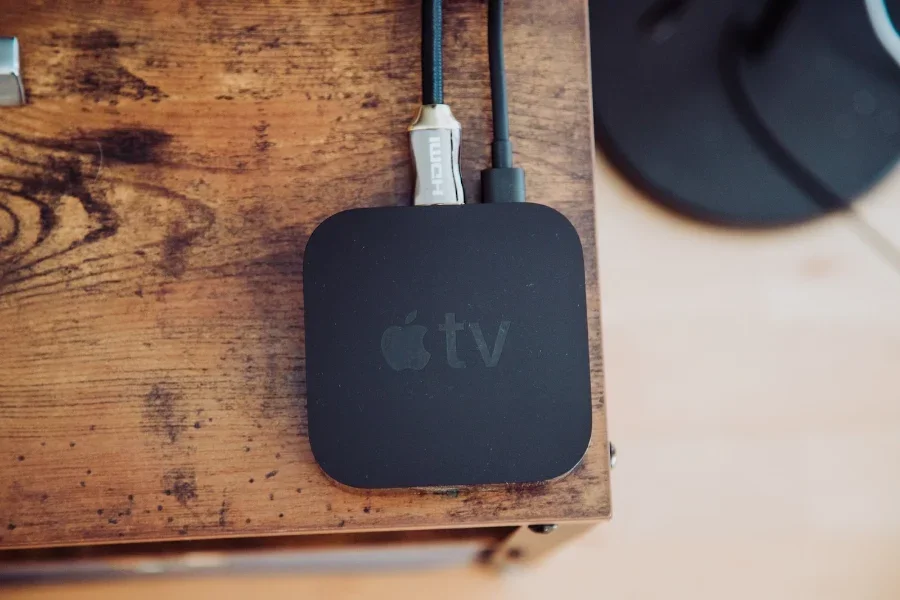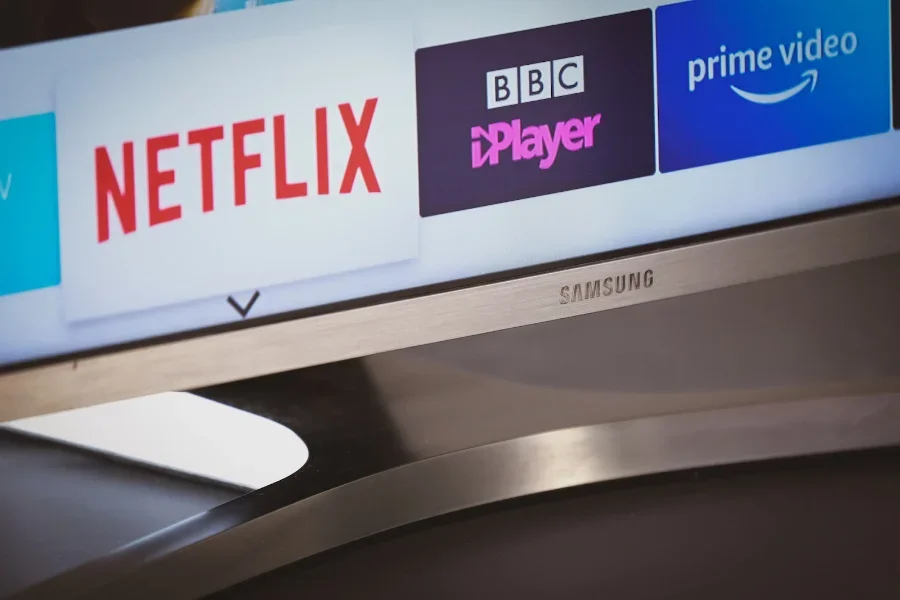Set-top boxes play a crucial role in the entertainment industry, transforming how we access and enjoy television content. The set-top box market has witnessed significant changes from the evolution of analog to digital and the integration of advanced technologies.
Here we will explore the importance of set-top boxes, the different types available, key features and functionality, major players in the market, challenges, opportunities, and the future outlook. Whether you’re a consumer looking to purchase a set-top box or simply interested in understanding this dynamic industry, join us as we dive into the world of set-top boxes.
Table of Contents
Definition and overview of set-top boxes
Market for set-top boxes
Evolution of set-top boxes
Types of set-top boxes
Key features and functionality
Major players in the set-top box market
Challenges and opportunities in the set-top box market
Future outlook
Conclusion
Definition and overview of set-top boxes
Set-top boxes (STBs) are electronic devices used to receive and decode digital television signals, allowing users to access television content on their televisions. These devices are typically connected to the tv and receive signals from various sources, such as cable, satellite, or internet-based streaming services.
Set-top boxes serve as an interface between the television and the incoming signal, converting it into a format to be displayed on the TV screen. They provide users with features such as channel tuning, program guide navigation, recording and time-shifting capabilities, on-demand content, and interactive applications.
Set-top boxes play a significant role in the entertainment industry for consumers and content providers. Here are some key reasons highlighting the importance of set-top boxes:
- Content distribution: Set-top boxes enable the distribution of television content from various sources such as cable, satellite, and internet-based streaming services. They ensure that the content is received, decoded, and displayed on the television screen, allowing viewers to access a variety of entertainment options.
- Access to digital TV: With the transition from analog to digital television broadcasting, set-top boxes became essential for receiving digital signals. They decode the signals and convert them into a format that can be displayed on television, ensuring a seamless transition to digital TV for viewers.
- Enhanced viewing experience: Set-top boxes offer various features that enhance the viewing experience.
- On-demand content & streaming services: Many set-top boxes now support on-demand content and streaming services. Users can access platforms like Netflix, Amazon Prime Video, or Hulu directly through their set-top boxes, opening up a vast library of movies, TV shows, and other digital content. This flexibility and access to various entertainment options have transformed how viewers consume media.
- Interactive features & applications: They often come with interactive features and applications that provide additional functionality. Users can access interactive program guides, video-on-demand services, gaming applications, and other interactive content, enhancing engagement and entertainment possibilities.
- Revenue generation for content providers: They enable content providers to distribute and monetize their content effectively. Through subscription models, pay-per-view services, or targeted advertisements, set-top boxes provide a platform for content providers to generate revenue and support producing high-quality entertainment content.
- Integration with smart home devices: Modern set-top boxes often integrate with smart home devices and ecosystems. They can be a central hub for controlling various connected devices, such as smart lights, thermostats, or security systems. This integration enhances the entertainment experience by creating a seamless and interconnected environment.
These devices have revolutionized how viewers consume and interact with television content, shaping the future of entertainment.
Market for set-top boxes
The global set-top box market was valued at USD 23.98 billion in 2022 and is expected to grow at a compound annual growth rate (CAGR) of 3.0% from 2023 to 2030. According to the set-top boxes market report by TMR, the market is projected to reach USD 35.2 billion.
The DTT set top boxes dominated the market in 2022, accounting for over 24.0% of the demand that year, and are expected to retain their dominance till 2030 as well. However, the OTT segment is anticipated to exhibit a CAGR of around 6.0% during this period.
Additionally, the HD segment is anticipated to capture a market share of around 91% by 2030 owing to increased demand driven by accessibility to a broader variety of channels than the 4K counterpart.
North America is the leading regional market for set-top boxes, owing to the high adoption rate of digital TV services and advanced technologies. Europe and the Asia Pacific region are also significant markets due to increasing digitization efforts and expanding customer bases.
The global set-top box market is experiencing steady growth, driven by the increasing demand for high-quality video content, advancements in digital broadcasting technologies, and the rise of streaming services. The market is expected to reach substantial revenue figures in the coming years.

Evolution of set-top boxes
Set-top boxes (STBs) have evolved significantly, adapting to technological advancements and changing consumer demands. The evolution began with analog STBs for decoding analog signals, followed by digital STBs that improved picture and sound quality. Interactive STBs introduced features like program guides and on-demand content, while HD STBs catered to the demand for high-definition viewing.
The integration of DVR functionality allowed users to record and time-shift programs, enhancing control over their TV experience. Hybrid STBs combined broadcast TV with internet-based content, offering a unified viewing experience. Smart STBs emerged with the rise of streaming services, turning regular TVs into smart TVs with access to various apps and internet browsing capabilities.
The latest trend is transitioning to cloud-based and virtual STBs, providing flexibility, scalability, and personalized content delivery through internet-based platforms. This eliminates the need for physical hardware, while virtual STBs enable multi-device access without dedicated hardware.
These advancements reflect the convergence of traditional TV, on-demand content, and streaming services. Integrating AI, machine learning, and smart home devices further enhances the capabilities and interconnectivity of STBs.
Today, STBs offer diverse features and functionalities, providing users with personalized and versatile entertainment options.
Types of set-top boxes
Several types of set-top boxes are available in the market, each designed to work with different television services and technologies. Here are the main types of set-top boxes:
Cable set-top box
Cable set-top boxes are used in cable television systems. They receive signals from cable service providers and decode them for display on the television. Cable set-top boxes often offer digital channel tuning, program guides, video-on-demand, and recording and pausing live TV.
Satellite set-top box
Satellite set-top boxes are used in satellite television systems. They receive signals from satellite service providers and convert them into a format that can be displayed on television. They typically provide features like channel tuning, interactive program guides, high-definition (HD) content support, and digital video recording (DVR) capabilities.
IPTV set-top box
IPTV (Internet Protocol Television) set-top boxes deliver television services over internet protocol networks. They connect to an IPTV service provider and receive television signals via the internet. IPTV set-top boxes offer features like video-on-demand, catch-up TV, time-shifting, and interactive applications.
Hybrid set-top box
Hybrid set-top boxes combine multiple functionalities and sources, providing users access to various television services. They can receive signals from cable, satellite, and internet-based streaming services, allowing viewers to access a broader range of content options. Hybrid set-top boxes offer channel tuning, DVR capabilities, on-demand content, and integration with streaming services.
Smart set-top box
Smart set-top boxes, also known as streaming boxes or media streamers, provide access to streaming services and online content. They connect to the internet and allow users to stream content from platforms like Netflix, Amazon Prime Video, or YouTube directly on their televisions. Smart set-top boxes often offer additional features like app stores, voice control, and integration with smart home devices.
It’s important to note that with the advancement of technology, some televisions now come with built-in set-top box functionalities, eliminating the need for external devices. These smart TVs often directly integrate streaming services and other features into the television interface.
Overall, the type of set-top box needed depends on the television service or technology used, whether cable, satellite, IPTV, or streaming services. Each type offers unique features and capabilities to enhance the television viewing experience.

Key features and functionality
When considering the purchase of a set-top box, understanding the key features and functionalities can help consumers make an informed decision. Here are some essential aspects to consider:
Channel tuning and navigation
Set-top boxes allow you to tune into different channels and navigate them easily. Look for a set-top box with a user-friendly interface, intuitive channel browsing, and quick channel-switching capabilities.
Video recording and time-shifting
DVR (Digital Video Recording) functionality allows users to record television shows and movies for later viewing. Time-shifting features enable pausing, rewinding, and replaying live TV. Consider a set-top box that offers ample storage space for recordings and easy-to-use recording options.
On-demand content and streaming services
Many set-top boxes now support on-demand content and popular streaming services. Ensure that the set-top box you choose is compatible with your preferred streaming platforms, such as Netflix, Hulu, or Amazon Prime Video. Access to a wide range of content options enhances your entertainment choices.
Interactive features and applications
Some set-top boxes offer interactive features and applications that provide additional functionality. These features can include interactive program guides, weather updates, news apps, gaming options, and access to social media platforms. Determine the level of interactivity and the available applications that align with your preferences.
High-definition and 4K support
If you have a high-definition (HD) or 4K television, ensure the set-top box supports the corresponding resolution so you can enjoy content in the best possible quality, taking advantage of the capabilities of your TV.
Connectivity and ports
Check the available connectivity options and ports on the set-top box. Common connections include HDMI, Ethernet, USB, and Wi-Fi. Consider your specific needs, such as connecting to external devices or internet connectivity, and ensure the set-top box supports them.
Remote control and user experience
Evaluate the design and functionality of the remote control that comes with the set-top box. Look for an ergonomic design, easy-to-use buttons, and convenient access to essential functions. A user-friendly interface and intuitive navigation can significantly enhance the overall user experience.
Compatibility and service provider support
If you have a specific cable or satellite service provider, ensure that the set-top box you choose is compatible with their system. Some providers may have recommended set-top box models or limitations on third-party devices.
Future-proofing and upgradability
Consider the future potential of the set-top box. Will it be able to support upcoming technologies and features? Can it receive software updates to stay up-to-date with the latest advancements? Choosing a set-top box with future-proofing capabilities can ensure longer-term usability.
By assessing these key features and functionalities, consumers can determine which set-top box best aligns with their specific requirements and preferences. It’s essential to consider the desired television services, content options, and the overall user experience to make an informed purchase decision.

Major players in the set-top box market
The set-top box market is competitive, with several major players operating globally. Here are some of the leading companies in the set-top box industry:
- Arris (acquired by CommScope): Arris is a prominent player in the set-top box market, offering a range of cable set-top boxes and associated equipment. The company specializes in providing solutions for cable operators and telecommunications service providers.
- Technicolor: Technicolor is a well-known media and entertainment technology company. They offer a diverse portfolio of set-top boxes, including cable, satellite, IPTV, and hybrid models. Technicolor focuses on delivering innovative and feature-rich solutions for the digital TV market.
- Huawei: Huawei is a global leader in telecommunications and networking solutions, including set-top boxes. They provide a range of set-top box options for cable, satellite, IPTV, and hybrid services. Huawei is known for its technological advancements and integration of advanced features into its set-top boxes.
- Cisco Systems: Cisco is a prominent player in the networking and telecommunications industry, offering a wide range of products and solutions. Cable and satellite operators widely use their set-top boxes, providing advanced features like high-definition support, DVR capabilities, and interactive applications.
- Roku: While primarily recognized for its streaming devices, Roku has made a significant impact in the set-top box market. Their set-top boxes offer seamless access to streaming services, on-demand content, and live TV options, making them popular for cord-cutters and streaming enthusiasts.
- Amazon: Amazon’s Fire TV devices have gained popularity as set-top boxes, offering access to various streaming services, Alexa voice control, and integration with other Amazon devices. Their Fire TV Stick and Fire TV Cube have become popular choices.
- Apple: Apple TV is a set-top box offering from Apple Inc. It provides access to various streaming services, apps, and iTunes content. Apple TV integrates with other Apple devices and offers features like Siri voice control and AirPlay for seamless content streaming.
- Samsung: While primarily known for its televisions, Samsung also offers set-top boxes as part of its ecosystem. Samsung’s set-top boxes provide access to smart TV features, streaming services, and various connectivity options.
- ZTE Corporation: ZTE is a leading telecommunications and information technology solution provider. They offer various set-top boxes, including cable, satellite, IPTV, and hybrid models, catering to different service providers and markets.
- Amino Communications: Amino Communications specializes in IPTV and hybrid set-top box solutions. They offer a range of devices tailored for IPTV operators, enabling the delivery of high-quality video and interactive services over IP networks.
These companies are among the key players in the set-top box market, continually innovating and adapting to meet the evolving needs of consumers and the entertainment industry.
Challenges and opportunities in the set-top box market
The set-top box market faces various challenges and opportunities as technology advances and consumer preferences shift. Here are some key challenges and opportunities in the set-top box market:
Challenges
- Cable cord-cutting: The increasing trend of cable cord-cutting poses a challenge to traditional set-top boxes. Consumers opt for streaming services and over-the-top (OTT) platforms, reducing the demand for traditional cable and satellite set-top boxes.
- Competition from streaming devices & smart TVs: The rise of streaming devices, such as Roku, Amazon Fire TV, and Apple TV, along with the integration of smart TV capabilities, creates competition for standalone set-top boxes. Consumers may opt for these all-in-one solutions rather than investing in separate set-top boxes.
- Regulatory & policy challenges: Set-top box market regulations and policies vary across regions. Compliance with different standards and regulations can be challenging for manufacturers and service providers operating in multiple markets, impacting the development and distribution of set-top box products.
- User interface and user experience: Set-top boxes must provide user-friendly interfaces and seamless user experiences to meet consumer expectations. Improving ease of use, navigation, and content discovery are ongoing challenges for set-top box manufacturers.
Opportunities
- Streaming services & OTT platforms: The growing popularity of streaming services and OTT platforms present an opportunity for set-top box manufacturers to integrate these services into their devices. By offering access to popular streaming platforms, set-top boxes can cater to consumers’ preferences for on-demand content.
- Advanced features & functionality: Integration of advanced features, such as voice control, artificial intelligence (AI), and machine learning, can enhance the capabilities and user experience. These technologies allow set-top box manufacturers to differentiate their products and offer innovative solutions.
- Emerging markets: Set-top box adoption is expanding in emerging markets where digital TV services are gaining traction. There is an opportunity for manufacturers to tap into these markets and provide cost-effective and feature-rich set-top boxes to meet the growing demand.
- Integration with smart home ecosystems: As smart home technology advances, integrating set-top boxes into smart home ecosystems presents enhanced connectivity and control opportunities. Set-top boxes can become central hubs for managing entertainment, home automation, and IoT devices within a smart home environment.
- 5G & next-generation technologies: The rollout of 5G networks and the development of next-generation technologies provide opportunities for set-top box manufacturers to leverage faster and more reliable connections. These advancements can support higher-resolution content, seamless streaming, and interactive experiences.
While challenges such as cord-cutting and competition from streaming devices exist, the set-top box market still holds opportunities for innovation, expansion into emerging markets, integration with smart home ecosystems, and leveraging new technologies. Adapting to changing consumer preferences and technological advancements is critical to unlocking these opportunities.

Future outlook
The future outlook for set-top boxes is influenced by several trends and technologies that are expected to shape the industry. Here are some key aspects to consider:
Transition to cloud-based and virtual set-top boxes
The shift towards cloud-based and virtual set-top boxes is gaining momentum. Cloud-based solutions eliminate the need for physical set-top boxes and enable content delivery and management through internet-based platforms. Virtual set-top boxes, powered by cloud infrastructure, allow users to access television services on various devices without requiring a dedicated hardware device. This transition offers flexibility, scalability, and cost-effectiveness.
Integration of artificial intelligence and machine learning
Artificial intelligence (AI) and machine learning (ML) technologies are increasingly being integrated into set-top boxes. AI-powered features like voice control, content recommendations, and personalized user experiences enhance convenience and engagement. ML algorithms can analyze user preferences and viewing habits to deliver tailored content suggestions. AI and ML enable better content search and discovery, automated content tagging and metadata management.
Convergence of set-top boxes with smart home devices
The convergence of set-top boxes with smart home devices and ecosystems is becoming more prevalent. Set-top boxes can act as central hubs, connecting and controlling various smart home devices such as lights, thermostats, security systems, and more. This integration enhances the overall entertainment experience, offering seamless control and automation of multiple devices from a single interface.
Rise of 5G and its impact on set-top box technology
The deployment of 5G networks brings faster and more reliable internet connectivity, which can significantly impact set-top box technology. With 5G, set-top boxes can deliver higher-resolution content, support real-time streaming, and enable seamless access to cloud-based services. The low latency and high bandwidth of 5G networks facilitate interactive features, gaming, and virtual reality experiences on set-top boxes.
Emphasis on energy efficiency and sustainability
As environmental concerns grow, there is an increasing focus on energy efficiency and sustainability in set-top box design. Manufacturers are exploring ways to reduce power consumption, adopt energy-efficient components, and implement standby and power-saving modes. This emphasis on sustainability aligns with evolving consumer expectations and regulatory requirements.
These advancements enhance user experiences, deliver personalized content, and optimize energy consumption. As the industry continues to evolve, set-top boxes are expected to become more versatile, intelligent, and interconnected, transforming how users access and interact with television services.
Conclusion
The set-top box market continues evolving and shaping how we consume television content. We have delved into the importance of set-top boxes in the entertainment industry, understanding their role in delivering high-quality video content and facilitating interactive experiences. Exploring the different types of set-top boxes, we have seen how they cater to diverse consumer needs, whether cable, satellite, hybrid, or streaming-focused.
Understanding the key features and functionalities has provided insights into what consumers should consider when purchasing. Additionally, we have explored the major players in the market, the challenges they face, and the opportunities that arise from emerging technologies and changing consumer preferences.
Looking ahead, the future outlook of the set-top box market is promising, with trends like cloud-based solutions, integration of AI and machine learning, convergence with smart home devices, and the impact of 5G technology shaping the industry. As the market continues to innovate, set-top boxes will play a pivotal role in transforming our television viewing experiences and keeping us entertained in the digital era.



